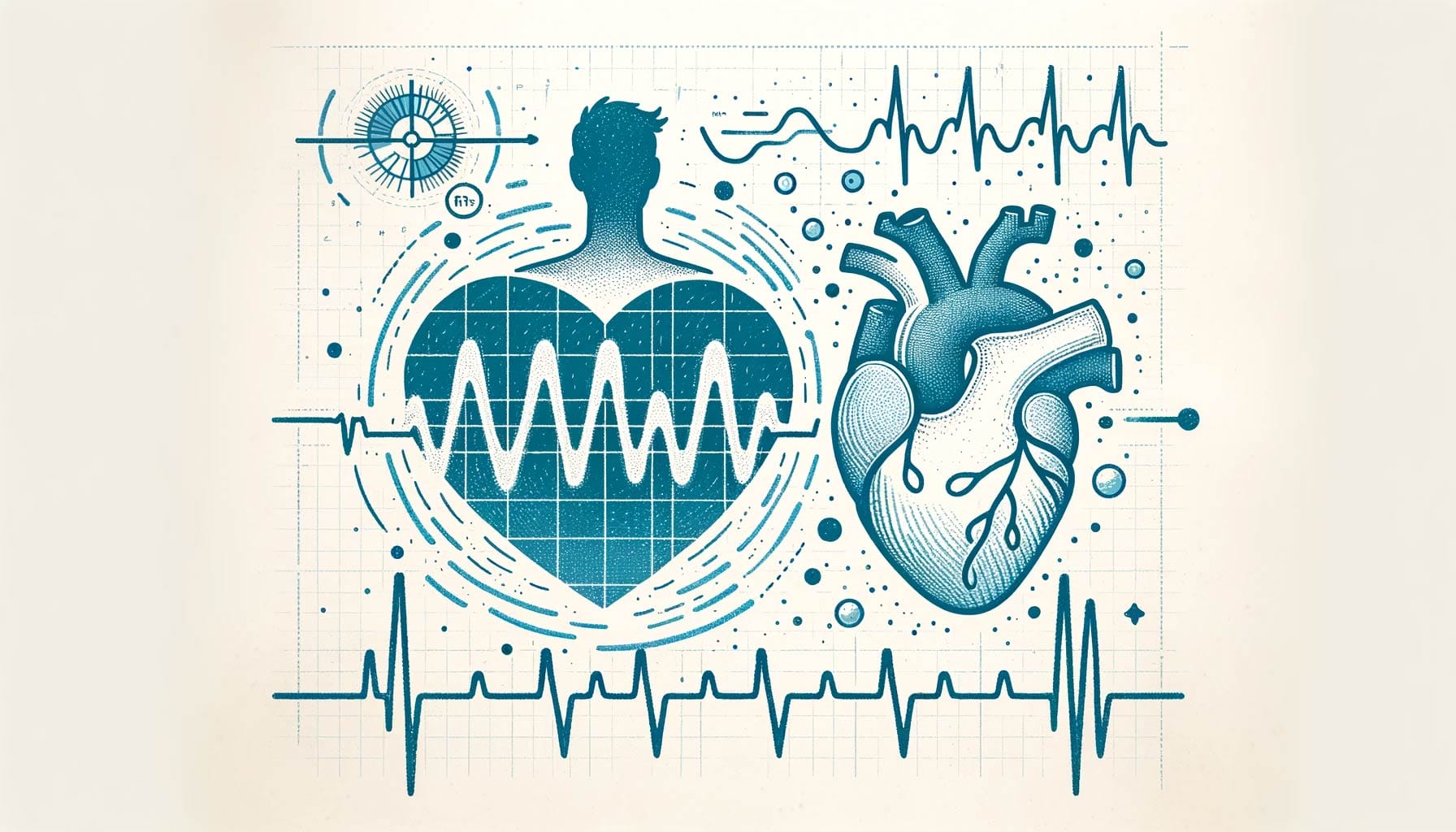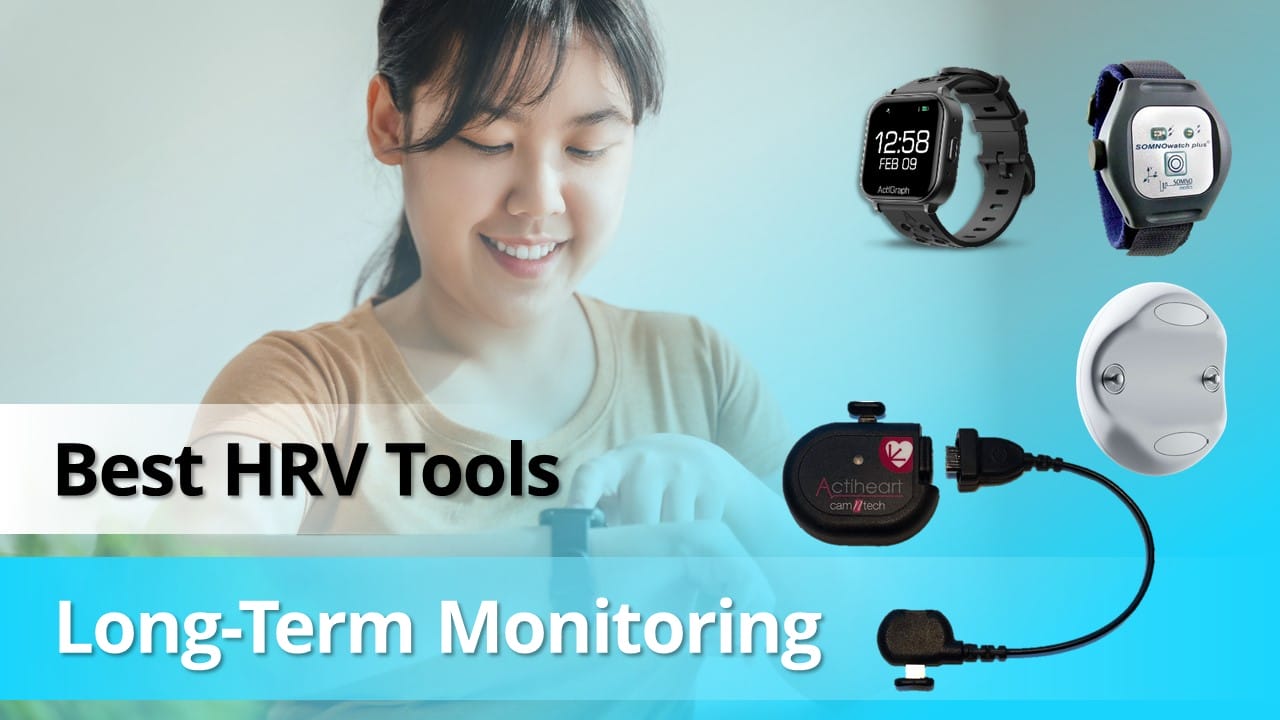1. Introduction to Long-Term HRV Monitoring
Heart rate variability (HRV) is an invaluable metric for assessing the autonomic nervous system, playing a crucial role in a wide array of research areas, from clinical trials to behavioral studies. The ability to monitor HRV over extended periods provides researchers with deep insights into how the body responds to various stressors, treatments, or conditions over time, making long-term monitoring especially relevant in clinical research settings.

2. Benefits of Continuous HRV Tracking in Research and Clinical Research
Continuous HRV tracking allows researchers to gather data in real-time and over long durations, offering a dynamic view of a participant’s physiological state under natural living conditions. This method is particularly advantageous in clinical research where understanding the nuanced effects of medical interventions on autonomic function is essential. For instance, long-term monitoring can help in:
- Assessing Treatment Efficacy: By continuously tracking HRV, researchers can observe how treatments influence autonomic balance over time, providing insights into the effectiveness and potential side effects of clinical interventions.
- Understanding Disease Progression: Continuous HRV data can reveal patterns and trends that may not be apparent in short-term studies, such as the gradual impact of a chronic illness on autonomic health.
- Enhancing Behavioral Research: In behavioral studies, long-term HRV monitoring can link physiological responses with behavioral interventions, offering a comprehensive picture of how lifestyle changes impact heart health.

“Continuous HRV tracking provides key insights into treatment responses and disease progression, crucial for clinical and behavioral research.”
The importance of HRV in research underscores the need for reliable, accurate, and user-friendly HRV monitoring tools that can withstand the demands of extended use without compromising participant comfort or data integrity. The following sections will explore the best HRV tools available for long-term monitoring, each suited for various research applications, and outline what researchers should look for when selecting a tool for their specific needs. This article aims to assist researchers in making informed decisions that enhance the quality and efficacy of their longitudinal studies.

3. Criteria for Choosing HRV Tools for Long-Term Monitoring
Selecting the right HRV monitoring tools is essential for conducting effective long-term research. These tools must not only be precise but also comfortable for participants to wear for extended periods, minimally intrusive, and capable of seamless data integration. Here are some key features to consider when choosing an HRV tool for long-term monitoring:
- Accuracy and Reliability: The accuracy of the HRV data is paramount, especially in clinical research where decisions about patient care or detailed physiological assessments are based on the data. Tools with high accuracy and low noise interference should be prioritized to ensure reliable measurements over time. Additionally, the reliability of the tool in different environmental conditions and across various physical activities needs to be considered.
- Comfort and Non-intrusiveness: For long-term monitoring, particularly in studies where participants are required to wear HRV monitoring devices for extended periods, the comfort of the device is crucial. Devices that are non-intrusive and cause minimal discomfort encourage better compliance and more consistent use, resulting in higher-quality data. Tools that are lightweight, have flexible wearing options, and do not restrict movement are often preferred.
- Data Integration Capabilities: HRV tools should be able to seamlessly integrate with other data collection systems and software platforms used in the research. This integration facilitates efficient data analysis and management, especially when dealing with large datasets typical of long-term studies. The ability of the HRV tool to synchronize with other biomedical sensors or electronic health records is also valuable.
- Minimal Maintenance Requirements: Tools that require minimal maintenance are essential for long-term studies to reduce the downtime and logistical burden of device management. Devices with long battery life, easy-to-clean components, and robust construction are ideal. Additionally, tools that can be easily updated or calibrated without extensive technical support ensure continuous operation throughout the study period.
By carefully considering these criteria, researchers can select HRV monitoring tools that not only meet the scientific needs of their studies but also enhance the feasibility and quality of long-term data collection. This careful selection process is critical for the success of longitudinal research projects and for maximizing the potential insights derived from continuous HRV monitoring.

4. Review of Different HRV Monitoring Technologies
- Electrocardiography (ECG) Devices: Electrocardiography (ECG) is renowned for its accuracy and reliability in measuring HRV, making it ideal for clinical research that demands precision. ECG devices measure the electrical activity of the heart and provide detailed data on heart rhythms. They are particularly effective for diagnosing cardiovascular conditions and assessing the impact of therapeutic interventions over long periods.
- Photoplethysmography (PPG) Devices: PPG devices are increasingly popular in both clinical and non-clinical settings due to their non-invasive nature and ease of use. These devices measure blood volume changes in the microvascular bed of the skin and are commonly embedded in consumer wearables like fitness trackers and smartwatches. While PPG is generally less accurate than ECG, especially in high-movement scenarios, advancements in technology are improving their reliability for long-term monitoring.
- Ballistocardiography-Based (BCG) Bed Sensors: Ballistocardiography (BCG) measures the mechanical movement of the body caused by the heartbeats. Bed sensors equipped with BCG and other technologies offer a unique opportunity for continuous, long-term night time HRV monitoring without contact to a participant. These sensors can be just inserted under the bed mattress and are capable of detecting HRV, respiratory patterns, and even body movements throughout the night, making them invaluable in both clinical research and home-based health monitoring.
Each of these technologies brings different strengths and limitations to long-term HRV monitoring, and the choice of tool should align with the specific needs and conditions of the research study. By leveraging the most appropriate technology, researchers can ensure that they collect the most accurate and relevant HRV data over extended periods.

5. Best Practices for Implementing Long-Term HRV Monitoring
Implementing long-term HRV monitoring in research projects requires careful planning and adherence to best practices to ensure data accuracy and participant compliance. Here are some strategies to maximize the effectiveness of long-term HRV monitoring setups:
- Establish Standard Protocols: Develop and standardize protocols for HRV data collection to ensure consistency across different times and settings. This includes standardizing the times of day for measurements, the position of the subject during data collection, and the specific procedures for applying and maintaining the devices.
- Prioritize Participant Comfort: Since long-term monitoring often involves continuous or frequent use of HRV monitoring devices, ensuring participant comfort is crucial. Choose devices that are non-intrusive and comfortable to wear for extended periods. Additionally, provide clear instructions and support to participants to minimize any discomfort or misuse of the monitoring equipment.
- Ensure Data Integrity: Implement robust data management practices to handle the large volumes of data typically generated in long-term HRV monitoring. This includes regular data backups, using reliable software for data analysis, and employing data cleaning techniques to correct or remove any corrupted data.
- Use Real-Time Data Monitoring: Where possible, utilize HRV monitoring tools that support real-time data transmission and monitoring. Real-time monitoring allows for immediate adjustments in research protocols and can help in early detection of any issues with data collection or participant health.
- Facilitate Continuous Communication: Maintain open lines of communication with participants throughout the monitoring period. Regular check-ins can help address any issues participants may encounter with the HRV monitoring devices and can also serve to remind participants of the importance of their consistent participation.
By following these best practices, researchers can effectively implement long-term HRV monitoring in their studies, leading to high-quality data collection and meaningful research outcomes. These practices not only enhance the reliability of the HRV data but also support the overall goals of the research project.

6. Case Studies
To illustrate the effectiveness of long-term HRV monitoring in various research settings, here are a few case studies that demonstrate how different HRV tools have been successfully implemented and the insights gained from these studies:
In a study analyzing long-term heart rate variability (HRV) in patients with stable coronary artery disease, it was found that changes in low-frequency (LF) HRV during posture changes could predict cardiac mortality risk. Specifically, an increase in LF power during head-up tilting was linked to a higher mortality risk, suggesting that this HRV measure might serve as a marker for sympathetic overactivation in these patients.
Another study focused on the non-Gaussianity index (λ) of long-term HRV, which assesses the likelihood of large, abrupt heart rate changes. Increased λ values were associated with a higher mortality risk in patients with congestive heart failure and post-myocardial infarction, highlighting its potential as a significant predictor of cardiac health outcomes.

7. Best Practices for Implementing Long-Term HRV Monitoring with Advanced Integration Features
Implementing long-term HRV monitoring effectively in research projects involves using advanced tools that facilitate easy integration and data management. One crucial feature is the availability of an Application Programming Interface (API) or Software Development Kit (SDK), which allows researchers to seamlessly integrate HRV monitoring devices with existing systems for automatic data capture and analysis.
- Utilizing API and SDK for Seamless Data Integration: The inclusion of an API or SDK enables the creation of custom applications, ensuring that HRV data flows directly into research systems without manual intervention. This is especially beneficial in large-scale projects where managing vast amounts of data efficiently is critical. For instance, our company, Fibion, offers both an SDK and a REST API with our monitoring solutions. These tools provide researchers with the flexibility to integrate HRV data into their systems, enhancing data management and analysis capabilities.
- Advantages of Direct Data Integration: Direct integration through APIs and SDKs not only simplifies the data collection process but also enhances data accuracy by reducing the risk of manual errors. It allows for real-time data analysis, enabling researchers to make prompt adjustments based on immediate feedback from the monitoring systems.
By leveraging these advanced integration features, researchers can ensure a streamlined and efficient workflow, making it easier to handle the complexities of long-term HRV monitoring. This approach not only saves time but also significantly improves the scalability and reliability of research projects.

8. Conclusion
The integration of advanced HRV monitoring tools in research offers profound benefits across various fields, from clinical trials to sports science and behavioral health. Employing devices with comprehensive API and SDK capabilities not only streamlines the data collection and analysis processes but also enhances the accuracy and efficiency of long-term studies. As we continue to advance our understanding of HRV and its implications for health, these tools are instrumental in pushing the boundaries of what we can achieve in medical and psychological research.
By ensuring the seamless integration of HRV data into customized systems, researchers can handle large datasets more effectively, making significant strides in personalized medicine and tailored training programs. The future of HRV research looks promising, with technological advancements paving the way for more precise, real-time monitoring and intervention, ultimately leading to better health outcomes and improved quality of life.
This article aims to assist researchers in selecting the best HRV tools for their specific needs, emphasizing the importance of long-term monitoring in gaining comprehensive insights into autonomic nervous system activity. With the right tools and practices, the potential to discover groundbreaking findings in HRV research is immense.
9. Further Reading and Resources
For those interested in expanding their knowledge on heart rate variability (HRV) and diving deeper into specific methodologies and applications, a wealth of resources is available. Here are several key articles and resources from our website that can provide additional insights into HRV data analysis and its practical applications:
- Understanding Heart Rate Variability: A Comprehensive Guide: This foundational article offers an extensive overview of HRV, discussing its physiological basis and the implications for health and disease research. It’s a great starting point for those new to HRV.
- The Role of HRV in Sports Science: A Game-Changer for Athletes: Learn about how HRV is applied in sports science to optimize athlete training and recovery, emphasizing the use of HRV to monitor physiological readiness and prevent overtraining.
- HRV and Cardiology: A Vital Tool for Heart Health: This article discusses the critical role of HRV monitoring in cardiology, detailing how HRV metrics are used to assess and manage cardiovascular conditions.
- Unraveling the Intricacies of HRV Measurement Techniques: This article covers the latest advancements in HRV measurement technologies, including new devices and methodologies that are pushing the boundaries of what’s possible in HRV research.
You Might Also Be Interested
- 📚 Delve into our comprehensive HRV Article Collection for insightful perspectives on Heart Rate Variability (HRV).
- 🔍 Learn how the advanced features of Fibion Emfit & Fibion Vital can aid you in your HRV research.
- 📅 Planning an HRV measurement and analysis? For a chat with our HRV expert, book a session with Dr. Miriam Cabrita.
Frequently Asked Questions about HRV Tools for Long-Term Monitoring:
What is HRV and why is long-term monitoring important? +
Heart Rate Variability (HRV) measures the autonomic nervous system’s activity through heartbeat interval variations. Long-term monitoring is crucial for understanding chronic conditions, treatment effects, and recovery processes in real-world settings.
What are the benefits of continuous HRV tracking in clinical research? +
Continuous HRV tracking allows for real-time, dynamic assessments of how treatments affect autonomic balance, provides insights into disease progression, and aids in behavioral research by linking physiological responses to interventions.
What features should researchers look for in long-term HRV monitoring tools? +
Key features include accuracy, reliability, comfort, non-intrusiveness, minimal maintenance, and data integration capabilities. These ensure high-quality data collection and participant compliance over extended periods.
How do different HRV monitoring technologies vary for long-term use? +
ECG devices offer high precision for clinical settings, PPG devices provide convenient monitoring in wearables, and BCG devices suit non-intrusive settings like sleep research. Each has specific benefits depending on the research context.
What best practices should researchers follow when implementing long-term HRV monitoring? +
Researchers should establish standardized protocols, prioritize participant comfort, ensure data integrity through effective management, and use real-time data monitoring to optimize research outcomes.
How can advanced integration features enhance long-term HRV monitoring in research? +
Advanced integration features like APIs and SDKs facilitate seamless data capture and analysis, improve scalability, and enhance the accuracy and efficiency of long-term HRV studies, especially in large-scale or multi-faceted research projects.











